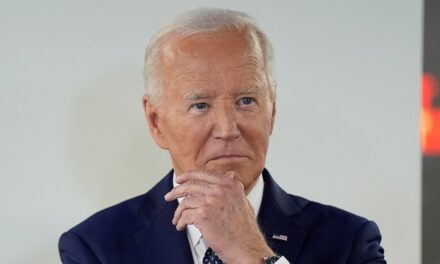In the realm of American politics, few topics ignite as much debate as the health and fitness of the nation’s leaders. Over the past few years, discourse surrounding the health of President Donald Trump during his first term was scrutinized extensively, raising questions not only about the physical condition of the President but also about the nature of media accountability and scrutiny. Conversely, similar inquiries into President Joe Biden’s health have garnered far less attention, leading some observers to charge the press with a double standard in its approach to the two leaders.
The media’s examination of Trump’s health was relentless, fueled by a backdrop of concerns regarding the President’s weight, eating habits, and the fitness required for the demanding role of Commander-in-Chief. Trump, who was 70 years old when he took office in 2017, was frequently characterized in headlines as being overweight and facing various health issues, regardless of his regular medical examinations.
During the Trump administration, the media reported on various incidents that raised flags regarding his mental acuity and physical well-being. An infamous moment from 2018, when Trump underwent a physical examination, was central to a frenzy of analysis and speculation. While the White House and Dr. Ronny Jackson, the then-physician to the President, characterized the results as good, skepticism persisted. Critics and pundits amplified doubts about his fitness and mental sharpness, using terminology that bordered on sensationalism.
Just a few years into his presidency, opinions about Trump’s health morphed into significant articles filled with conjectures regarding his cognitive abilities. An episode in which Trump struggled to drink water and climb a ramp at a West Point event added fuel to the fire of speculation about his age and health.
Throughout this period, the media engaged in a relentless cycle of discussion and analysis punctuated by various medical professionals weighing in from afar, offering their expertise on what they perceived to be troubling signs. Moreover, social media platforms exploded with threads and discussions analyzing every public appearance, questioning his agility and memory.
Critically, this scrutiny was also intertwined with the broader conversation regarding presidential fitness for duty. As per the 25th Amendment of the U.S. Constitution, the notion of what constitutes a healthy and fit president came under fire, repeatedly mandating conversations not just about Trump but the precedent set for future leaders too.
However, as Joe Biden assumed office, the media’s tone shifted. Biden, who at 78 years old becomes the oldest president in U.S. history, has faced his share of commentaries regarding his health as well. However, the intensity and depth of such discussions pale in comparison to those that marked Trump’s time in office.
Biden’s health assessments, the publicity of his medical records, and even public gaffes typical of his speech have often drawn scrutiny, but the analysis has been less severe and relentless compared to that faced by Trump. Media coverage leaned towards emphasizing experience and wisdom, often resorting to softer phrasing when addressing concerns about the President’s age and fitness.
Part of this variance can be attributed to the differing personalities of the two presidents. Trump’s bombastic and confrontational style often led to heightened scrutiny while Biden’s more tempered and empathetic approach drew a different audience reaction. This inherent difference in public perception might have influenced editorial choices regarding coverage.
Pundits and analysts from across the political spectrum have frequently pointed to this double standard, positing that media outlets exhibit a selective lens when addressing the health of senior political figures. Critics assert that while the mainstream media have dissected Trump’s every hiccup, they have failed to apply equivalent rigor to Biden’s health circumstances, labeling it a glaring inconsistency in journalistic objectivity.
Furthermore, a close examination of reporting surrounding Biden’s health unveils an appreciable trend of minimizing rather than maximizing potential concerns. Notably, many articles related to Biden reference his age in terms of experience rather than potential failure or incapacity. This rhetorical framework shapes public perception significantly; equating maturity with capability while contrasting it against Trump’s advanced age argued in the context of having troubling health issues.
As the debate over the two presidents’ health continues, it brings to light fundamental questions about the role of the media in democracy. What responsibility does the press have in holding leaders accountable for their health and fitness? How should they maintain a standard that provides equitable coverage across political lines? These inquiries resonate deeply during electoral processes and often shape public sentiment as elections loom closer.
Moreover, some suggest that the layered reporting of health in politics also reflects deeper biases rooted in politics and culture at large. Issues about weight, fitness, and mental health are inextricably bound to broader societal narratives about vigor, youth, and capability that reverberate across American society. How the media approaches these narratives deeply influences political discourse and voter engagement.
In light of this narrative, advocates for responsible journalism emphasize the need for sustained scrutiny of all elected officials wherever health and fitness are concerned, without biases that might serve to elevate some while diminishing others. The crux of healthy skepticism must remain unwavering across political divides, establishing a foundation whereby the press serves as a bulwark against misinformation while ensuring that public dialogues remain critical yet fair.
As the political landscape continues to evolve, the imperative for a trustworthy and equitable media voice cannot be overstated. In a nation where the health and fitness of its leaders directly impact governance and policy-making, the responsibility of the Fourth Estate to report accurately and impartially is paramount. Understanding this dynamic helps shed light on the broader implications of media narratives surrounding leaders’ health and calls for an introspective re-evaluation of journalistic standards and practices.
Conclusively, the examination of the health and fitness of American Presidents highlights not only the ongoing discourse about our leaders but also the role of the media within that examination. The perceived discrepancies in coverage between Trump and Biden will likely remain a point of contention. As it stands, the media must act with diligence and fairness, striving to present an accurate narrative focused on the facts without allowing political biases to cloud critical reporting on an issue that should be of paramount concern to all citizens.
































